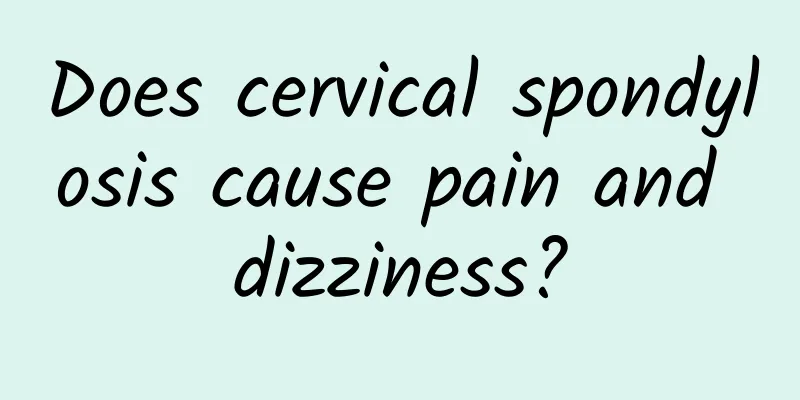Does cervical spondylosis cause pain and dizziness?

|
Cervical spondylosis may cause cervical pain and dizziness. Cervical spondylosis is a manifestation of cervical degenerative disease, usually caused by long-term poor posture, excessive use of the neck or aging. This disease can compress nerves or blood vessels, causing symptoms such as cervical pain and dizziness. 1. Genetic factors. People with a family history of cervical spondylosis are more likely to suffer from cervical spondylosis. Genetic factors make the cervical structure of some people more susceptible to degenerative changes. 2. Environmental factors. Long-term bad posture, such as lowering your head to play with your phone or sitting for a long time, will increase the burden on the cervical spine and promote bone hyperplasia. People who need to lower or raise their heads frequently at work are also more likely to get sick. 3. Physiological factors. As we age, the cervical intervertebral discs and ligaments gradually degenerate and lose elasticity, making bone hyperplasia more likely to occur. Obesity and lack of exercise can also increase the burden on the cervical spine. 4. Pathological factors. Cervical spine injury or inflammation may induce bone hyperplasia. In severe cases, it may compress the vertebral artery, leading to insufficient blood supply to the brain and causing dizziness. To deal with cervical vertebrae bone hyperplasia, the following measures can be taken: 1. Drug treatment. Commonly used drugs include nonsteroidal anti-inflammatory drugs, muscle relaxants and nerve nutrition drugs. Specific drugs should be taken according to the doctor's advice. 2. Physical therapy. Including traction, massage, hot compress, etc., which can relieve pain and muscle tension. It is recommended to be carried out under the guidance of professionals. 3. Surgical treatment. When bone hyperplasia severely compresses nerves or blood vessels, surgical treatment may be required. Common surgeries include discectomy and spinal canal decompression. 4. Change your lifestyle habits. Maintaining a good sitting posture, avoiding lowering your head for a long time, and doing appropriate neck exercises can help relieve symptoms. 5. Exercise moderately. Swimming, yoga and other exercises can strengthen the neck muscles and improve the function of the cervical spine. However, you need to do it gradually and avoid overdoing it. 6. Pay attention to your diet. Proper supplementation of calcium and vitamin D helps maintain bone health. The key to preventing cervical spondylosis is to develop good living habits and correct posture. If there are obvious symptoms, you should seek medical attention in time and receive treatment under the guidance of a doctor. Through comprehensive measures, most patients can be effectively controlled and their quality of life can be improved. |
<<: What are the symptoms of ventricular septal defect in newborns?
>>: Main symptoms of knee synovitis
Recommend
Anal fistula caused by perianal abscess
Perianal abscess is an important cause of anal fi...
How to treat synovitis in children and what causes it
How is synovitis treated in children? What causes...
Why can't you eat bird's nest when you have a tumor?
Bird's nest may affect the recovery of cancer...
How to treat cervical spondylosis
Cervical spondylosis is mainly caused by degenera...
Premonition of recurrence of perianal abscess
Recurrence of perianal abscess is a headache. Man...
What foods are best for gallstones? What foods can you eat for gallstones?
What is the best food to eat for gallstones? What...
Can I eat Korean ginseng if I have breast cysts?
Patients with breast cysts can generally eat Kore...
What are the clinical symptoms of patients with gallstones?
The clinical symptoms of gallstone patients mainl...
What tests should be done for breast cysts
Breast cysts require ultrasound, mammography, and...
What are the causes of osteomyelitis?
What are the causes of osteomyelitis? Now osteomy...
What are the risks of minimally invasive surgery for breast cyst removal?
Minimally invasive breast cyst removal surgery ha...
How to regulate diet for female breast cysts
Dietary conditioning for female breast cysts can ...
What causes bone spurs on the body?
The main reason for bone spurs on the body is bon...
Why does urine smell so bad?
Strong smelling urine could be your body's wa...
Can breast cysts become cancerous?
Breast cysts generally do not turn into cancer, b...









